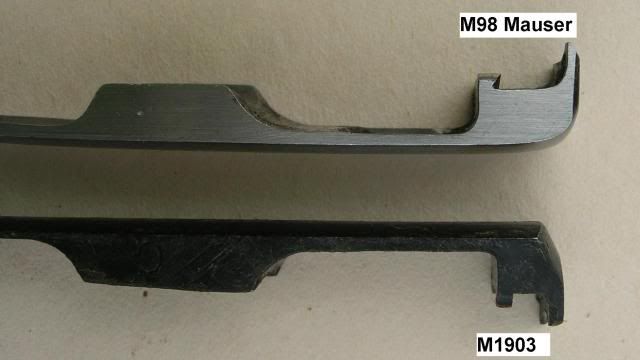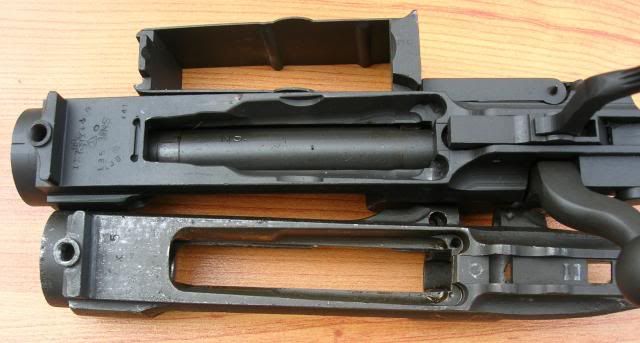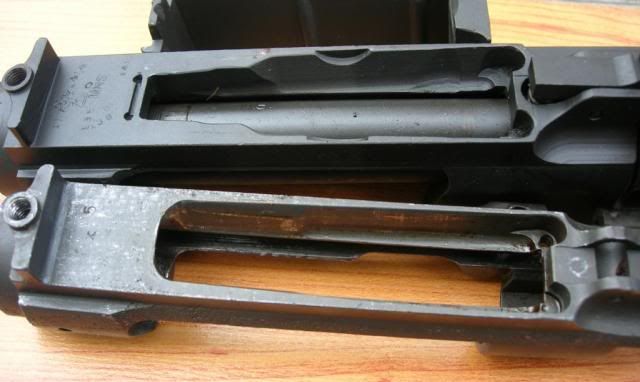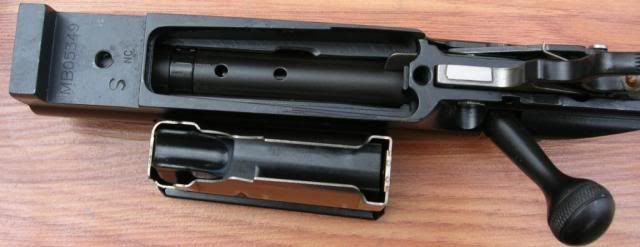Unlicensed Dremel
Moderator
So, first off, are ALL post-USRAC / post-2006 (FN Herstal) Win 70s of a *single* variety of bolt, and is that single variety the so-called "Controlled Round Push Feed" from 2003**, which has the big claw extractor and blade ejector like pre-64s, but allows single round feeding due to the "open" bottom of the bolt face? That's what mine appears to be. Or is there more than one variety of actions among post-2006 models, and if so, what are they? Are they making both "true" pre-64s (i.e. "Classics"), and these CRPFs, or what? Or has there even already been a change since 2006 in what they build.
Next, this CRPF (controlled round push feed) action... Is it really the best of all worlds? If so, has any other maker copied it? Wouldn't it be better classified as a push-feed generally, since you can push one in which was not in the mag (i.e. it's a Push feed with an asterisk, or push feed with mauser style claw extractor). Or is it quite apt and descriptive to call it CRPF, since the round IS "controlled" in a sense or to an extent, by the extractor, during feeding, albeit later in the process (farther forward it the stroke). In other words, what would YOU have named the CRPF? Seems to me the name might be apt since it is a true hybrid, not so much of a marketing gimmick.
I'm kind of starting to think it really is the best of all worlds - best design going - any drawbacks to it? I mean, I've thought for awhile that controlled feeds are more reliable on the OUT-stroke (extraction), but push-feeds are more reliable on the IN-stroke (feeding), and it does indeed seem darn near impossible to make this thing NOT cycle flawlessly, even running it upside down and sideways. And that's reliability under pressure, to say nothing of the handy-ness of being able to drop one in on top of the mag and shoot it.
The thing about overhyped gun marketing is the boy who cried wolf effect - you see so much utter bunk, that when Winchester came out with that CRPF however many years ago that was, I read about it, thinking "yeah right" - some tiny change but it's really a Remington-copy push feed without examining it closely or ever buying one until after 2010 - but looks like the hype might have been undersold if anything for once. I dunno. I know just enough about guns to be dangerous.
**But wait; elsewhere I read that CRPF came out in 1992, some 11 years earlier - what gives? I'm pretty sure it was 2003, not 1992. EDIT: OK, 1992 was the CRF "Classic", then 2003 was the CRPF.
I'm more impressed with my new Win 70 and my T/C Icon classic than any other turnbolts I've had, including Wby Mark V. Granted, though, there are several kinds I've not owned. These two just ooze quality.
Next, this CRPF (controlled round push feed) action... Is it really the best of all worlds? If so, has any other maker copied it? Wouldn't it be better classified as a push-feed generally, since you can push one in which was not in the mag (i.e. it's a Push feed with an asterisk, or push feed with mauser style claw extractor). Or is it quite apt and descriptive to call it CRPF, since the round IS "controlled" in a sense or to an extent, by the extractor, during feeding, albeit later in the process (farther forward it the stroke). In other words, what would YOU have named the CRPF? Seems to me the name might be apt since it is a true hybrid, not so much of a marketing gimmick.
I'm kind of starting to think it really is the best of all worlds - best design going - any drawbacks to it? I mean, I've thought for awhile that controlled feeds are more reliable on the OUT-stroke (extraction), but push-feeds are more reliable on the IN-stroke (feeding), and it does indeed seem darn near impossible to make this thing NOT cycle flawlessly, even running it upside down and sideways. And that's reliability under pressure, to say nothing of the handy-ness of being able to drop one in on top of the mag and shoot it.
The thing about overhyped gun marketing is the boy who cried wolf effect - you see so much utter bunk, that when Winchester came out with that CRPF however many years ago that was, I read about it, thinking "yeah right" - some tiny change but it's really a Remington-copy push feed without examining it closely or ever buying one until after 2010 - but looks like the hype might have been undersold if anything for once. I dunno. I know just enough about guns to be dangerous.
**But wait; elsewhere I read that CRPF came out in 1992, some 11 years earlier - what gives? I'm pretty sure it was 2003, not 1992. EDIT: OK, 1992 was the CRF "Classic", then 2003 was the CRPF.
I'm more impressed with my new Win 70 and my T/C Icon classic than any other turnbolts I've had, including Wby Mark V. Granted, though, there are several kinds I've not owned. These two just ooze quality.
Last edited:






